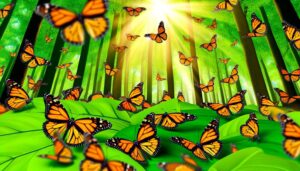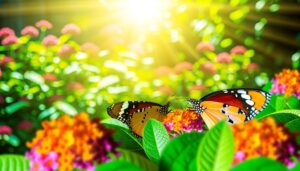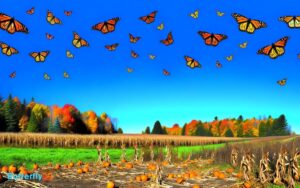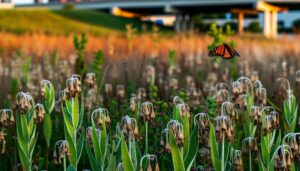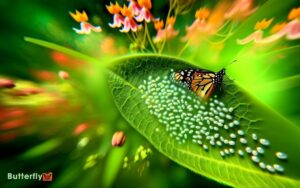Monarch Butterflies in Washington State: Explore the Routes!
In Washington State, you’ll observe monarch butterflies engaging in extensive migratory journeys guided by environmental cues like temperature changes and daylight.
- They rely on Asclepias-rich habitats, including coastal areas and meadows, for larval development and nectar supplies.
- Conservation efforts focus on habitat restoration, public education, and policy change to support these important insects.
- Citizen science projects play an essential role in tracking migration patterns and habitat use, contributing valuable data for research.
- Climate change and habitat disruption have a substantial impact on their migration and reproductive success.
Discover more about their impressive but threatened migratory behavior and conservation needs.
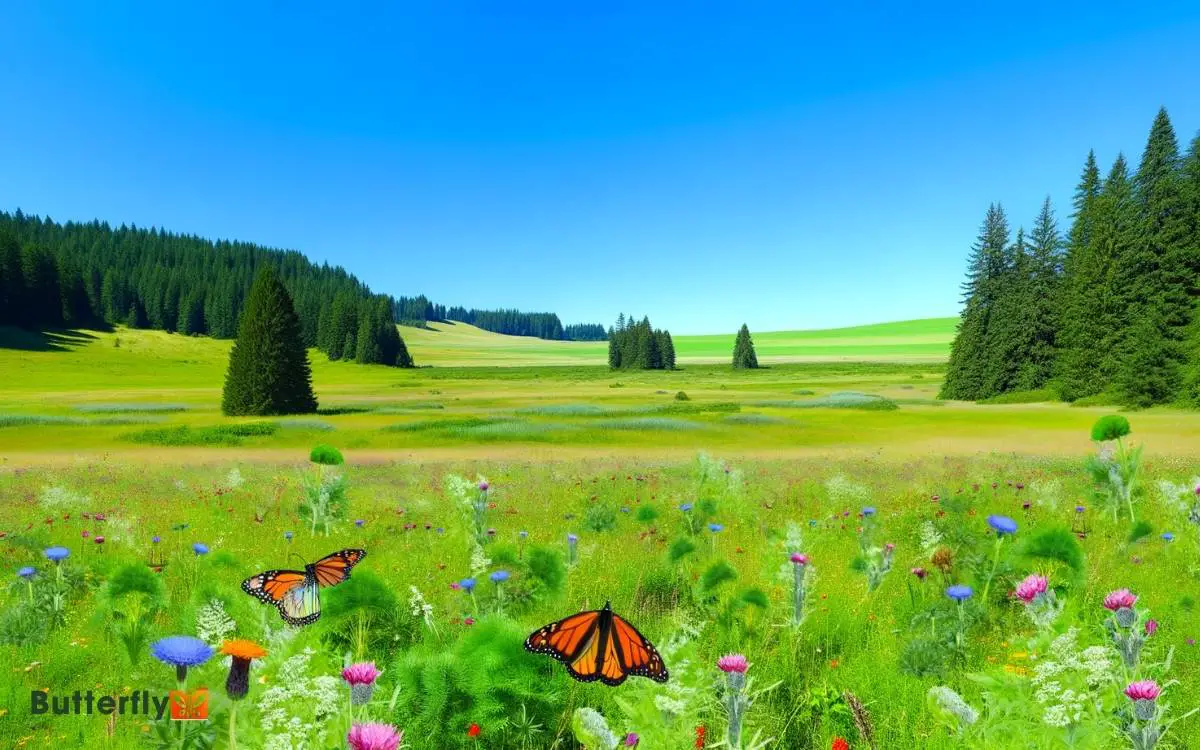
Key Takeaways
Migration Patterns
Monarch butterflies in Washington State exhibit distinct migration patterns, traveling thousands of miles to reach their wintering grounds in Mexico.
You’ll find that these butterflies follow a specific route, guided by environmental cues like temperature changes and daylight length. Research by Oberhauser et al. (1997) confirms that monarchs use a combination of genetic memory and environmental indicators to navigate.
They rely on a multi-generational migration strategy, where successive generations complete different legs of the journey. Observations show that they can travel up to 100 miles a day, utilizing thermal currents to conserve energy.
This impressive feat underscores their remarkable navigational abilities and adaptability, essential for their survival amidst changing climates and habitats. Understanding these patterns helps in conservation efforts.
Key Habitats
Washington State’s diverse ecosystems play an essential role in providing key habitats for monarch butterflies during their migration and breeding seasons.
You’ll find that coastal areas, meadows, and riparian zones offer the milkweed plants important for larval development.
Researchers have observed that areas rich in Asclepias species, such as A. speciosa and A. fascicularis, are particularly essential.
Studies by the Xerces Society indicate that these habitats also provide nectar sources like Eriogonum and Solidago species, necessary for adult sustenance.
Additionally, forest edges and open spaces with minimal pesticide use create safer environments. Monitoring efforts by the Washington Department of Fish and Wildlife highlight the importance of these habitats for sustaining migrating populations.
Understanding these details helps you appreciate the intricate balance monarchs require.
Conservation Efforts
Conservationists in Washington State are implementing a range of strategies to protect monarch butterflies, focusing on habitat restoration, public education, and policy advocacy.
By restoring native milkweed and nectar plants, they’re providing essential resources for monarch caterpillars and adults. Public education campaigns raise awareness about the monarch’s plight, encouraging community involvement.
Policy advocacy seeks stronger protections and funding for butterfly habitats.
| Effort | Impact | Outcome |
|---|---|---|
| Habitat Restoration | Increase in milkweed availability | Higher monarch reproduction rates |
| Public Education | Community awareness and action | Enhanced local conservation participation |
| Policy Advocacy | Legislative support for habitats | Improved funding and legal protections |
These efforts, supported by research from the Xerces Society, are critical for reversing the monarch’s population decline.
Citizen Science
Engaging in citizen science projects allows individuals to contribute valuable data on monarch butterfly migration patterns and habitat use, which researchers analyze to inform conservation strategies.
Your observations can include:
- Migration Timing: Record the dates when you first and last see monarchs.
- Habitat Details: Note the types of milkweed and nectar plants present in your area.
- Behavioral Patterns: Document the behaviors you observe, such as feeding or mating.
These data points are crucial for scientists studying monarch populations. According to Oberhauser et al. (2017), citizen science contributions have greatly enhanced the understanding of monarch distribution.
Climate Impact
Climate change disrupts monarch butterfly migration patterns and breeding cycles to a large extent, presenting new challenges for their survival.
You’ll notice that rising temperatures can cause monarchs to migrate later in the season, leading to misaligned arrival times with milkweed availability (Batalden et al., 2007).
Additionally, fluctuating temperatures impact their metabolic rates and reproductive success.
Research shows that extreme weather events, such as storms and droughts, severely affect their habitats and food sources (Oberhauser et al., 2017).
You might find that these conditions force monarchs to alter their traditional migratory routes, increasing mortality rates.
Understanding these impacts helps you grasp the urgent need for conservation efforts to mitigate climate change and preserve monarch populations.
Conclusion
Just like a candle flickering in the wind, the monarch butterflies‘ journey through Washington State hinges on delicate balances.
Your involvement in their conservation is akin to a gardener nurturing a fragile ecosystem. By supporting migration research, preserving key habitats, and participating in citizen science, you help maintain this intricate dance.
Climate change, like an ominous storm, threatens their path, but with collective effort, we can safeguard their future. Your actions today make all the difference.

